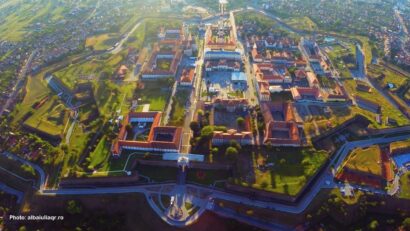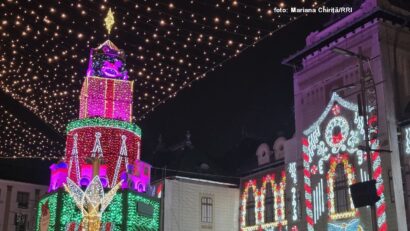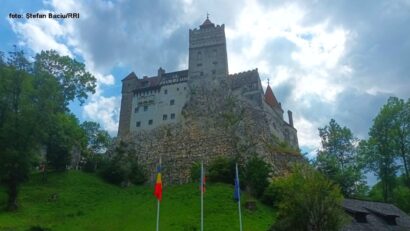Places worth visiting in 2016
We invite you to discover some of Romania's best tourist destinations.

Ștefan Baciu, 01.09.2016, 14:01
In recent years, Romanias capital city, Bucharest, has become an increasingly attractive city- break destination, thanks to its flight connections, its hotels, whose facilities have improved significantly, and the rapid tourist development of Bucharests Old City Center. Also making Bucharest attractive as a tourist destination are its large-scale cultural events, such as the George Enescu International Festival. Another top tourist destination for foreign visitors is the Danube Delta, an immense wetland area, with reed beds which offer shelter and nesting place for lots of bird species, some of them on the verge of extinction. It is also in the Danube Delta that the European Unions southernmost town can be found, Sulina. Following the instatement of free navigation on the Danube, in 1829, the town of Sulina became one of Romanias thriving cities in the late 19th century, and the most important harbour on the Black Seas western coast.
However, Transylvania retains the top position among Romanias most attractive tourist destinations, since here you can find most of the Apuseni Mountains natural attractions, the Saxon fortified churches, a wide range of cultural traditions as well as a quite diversified cuisine. Marian Constantinescu is editor-in-chief of “Travel Magazine and President of Romanias FIJET Tourism Press Club, an organization of tourism journalists.
Marian Constantinescu believes Romania also has other places that are worth visiting in 2016: Many people became acquainted with the destination of the year 2016, it is highly commended by international publications and websites. On the other hand, Id also like to underline that tourists have more connections to the north-eastern city of Iasi. There are foreign hotel chains that have entered the market in Iasi, and from a town-planning and architectural point of view, today Iasi stands out as a city that can quite aptly claim the status of European cultural city. Iasi is worth visiting, with all its museums and, undoubtedly, also because it is a nostalgic city. There is a growing number of tourists coming from Israel, and the moment those international chains appeared in Iasi, it was a signal there were possibilities to do tourism in style.
Located in north-eastern Romania, Iasi is one of the countrys largest cities, as well as a prominent university centre. The area surrounding the Palace of Culture, one of the citys landmarks, has been restructured and became an important commercial area, with lots of spaces tailored for event tourism. Also worth visiting in Iasi are the Three Hierarchs Monastery, the Metropolitan Cathedral, the Golia Monastery, the Union Museum, the Printing Press Museum as well as the building of the “Vasile Alecsandri National Theatre.
Journalist Marian Constantinescu did not stop at one Romanian tourist destination alone, which is worth visiting this year: Theres also something else which is worth visiting, the more so as spring is drawing near: the wooden churches in Maramures, for which European funding has been earmarked. They are included on UNESCOs World Heritage List and a circuit of the churches and monasteries in Maramures must be done by all means. I recommend a destination people usually pass through, yet they do not make their stopover there, the town of Targu Mures.
Situated in northern Romania, Maramures boasts a significant forested area and equally impressive hunting and fishing resources. Along the centuries, the forest has provided to the inhabitants of Maramures the necessary raw material for the emergence and development of a genuine wood civilisation. Wooden churches and the tall wooden gates specific to Maramures stand proof of this civilization, being real works of folk art. Apart from woodworking, tourists will undoubtedly notice that each household is turned into a miniature-weaving centre, particularly in wintertime.
Everything is made in a household, from folk costume pieces, which villagers usually wear on Sundays, when they go to church, or on big holy days, to carpets, rugs, and other artefacts, such as the traditional “cergi, that is fleecy blankets, or bed covers, which are usually white, or in black and red stripes. Apart from its famous wooden churches, Maramures boasts one of the most fascinating and wild areas in Romania, the Vaser Valley. 50 km long, this valley can hardly be compared to any other valley in the Carpathian Mountains. You can travel along the Vaser Valley, either by foot, as a backpacker, or by taking a ride on the traditional train, called “Mocanita. Either way, the trip will undoubtedly be a memorable experience and equally an adventure.
Travel journalist Marian Constantinescu has also extended us the invitation to visit another tourist destination, which is within two- hour drive from Bucharest: “A big surprise for tourists is one of the former capitals of Wallachia, Targoviste, which now has an interesting tourist circuit to offer, including many museums. It earns its fame to ruler Vlad the Impaler, the more so as there is confusion nowadays, between Vlad the Impaler and Dracula. And, lets be honest, Dracula is and will further be the best selling and most advertised brand. Furthermore, its free advertising, as no one spends a dime on it. The stronghold is very well restored and worth visiting, just like the history, archaeology and art museums, which complement it. Decision-makers in the tourism industry have designed an interesting circuit, and you have a big surprise when visiting Targoviste.
The big attraction of Targoviste is undoubtedly the Princely Court, a compound made up of 15th-18th century constructions. The first princely residence with an inner court and towers, whose ruins are still visible today, just like part of the walls and the underground, was built by order of ruler Mircea the Old (1386-1418). The succeeding rulers had the constructions dating back to Mircea the Old restored and added new ones. For instance, during the rule of Vlad the Impaler (1456-1462) the Chindia Tower, with a purely defensive role was built. It still juts over the vestiges of the Princely Court in Targoviste. The Princely Church, which is also on the premises of the Princely Court, was erected by order of Petru Cercel (1583-1585).






























